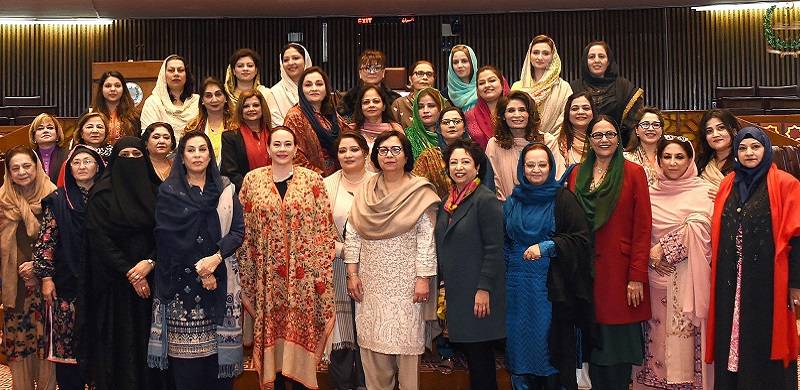
Although Pakistan's female parliamentarians accounted for just one-fifth of the Parliament, female members of Parliament (MPs) introduced 35 per cent of the 2021-22 parliamentary agenda and on average attended more National Assembly sessions than their male counterparts.
According to the Annual Women Parliamentarians Performance Report 2022 released by Free and Fair Election Network (FAFEN), this year female parliamentarians were more active in parliament than they have been since the 15th National Assembly took oath in 2018.
Female parliamentarians sponsored 38 per cent of the 2021-22 parliamentary agenda in the National Assembly, and 25 per cent in the Senate.
Female MNAs attended 76 per cent of National Assembly sittings, compared with male MNAs who attended just 60 per cent of NA sittings. In the Senate, female senators attended an average of 77 per cent of all sessions, while male senators attended just 70 per cent.
For every 10 agenda items a female MNA contributed to the assembly' Orders of the Day, male MNAs contributed just five. In the upper house, female senators contributed nine agenda items to the Orders of the Day on average and male senators contributed seven.
Despite the significant contribution of female parliamentarians, nearly 20 per cent of female MNA agenda items lapsed or remained unaddressed. Excluding parliamentary questions, the percentage of unaddressed legislative and representative agenda reached 55 per cent.
Female parliamentarians tackled a range of issues during this period, including, Covid-19 vaccination efforts; workers' rights and entitlements; inflation; energy supply and pricing; child and human rights; international trade and commerce; and water management.
According to the Annual Women Parliamentarians Performance Report 2022 released by Free and Fair Election Network (FAFEN), this year female parliamentarians were more active in parliament than they have been since the 15th National Assembly took oath in 2018.
Female parliamentarians sponsored 38 per cent of the 2021-22 parliamentary agenda in the National Assembly, and 25 per cent in the Senate.
Female MNAs attended 76 per cent of National Assembly sittings, compared with male MNAs who attended just 60 per cent of NA sittings. In the Senate, female senators attended an average of 77 per cent of all sessions, while male senators attended just 70 per cent.
For every 10 agenda items a female MNA contributed to the assembly' Orders of the Day, male MNAs contributed just five. In the upper house, female senators contributed nine agenda items to the Orders of the Day on average and male senators contributed seven.
Despite the significant contribution of female parliamentarians, nearly 20 per cent of female MNA agenda items lapsed or remained unaddressed. Excluding parliamentary questions, the percentage of unaddressed legislative and representative agenda reached 55 per cent.
Female parliamentarians tackled a range of issues during this period, including, Covid-19 vaccination efforts; workers' rights and entitlements; inflation; energy supply and pricing; child and human rights; international trade and commerce; and water management.

